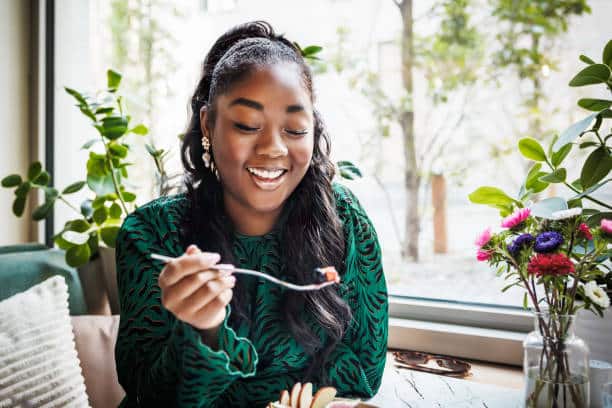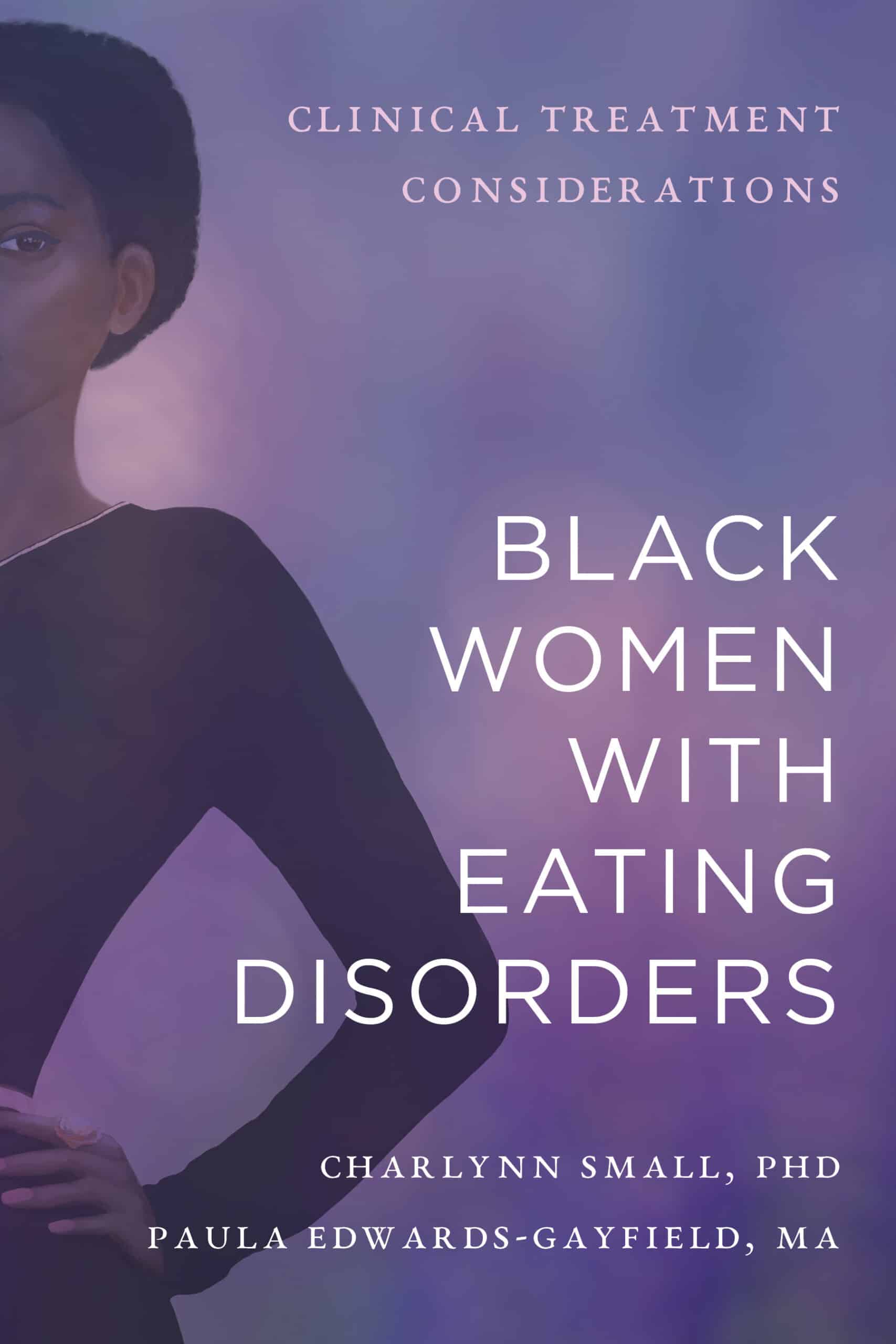
The prevailing image of someone with an eating disorder often defaults to a young, affluent White woman. However, this narrow perception dangerously obscures a widespread issue, particularly within the Black community.
Charlynn Small and Paula Edwards-Gayfield, authors of the recently published book on “Black Women with Eating Disorders”, are challenging these misconceptions, shedding light on the unique ways eating disorders manifest in Black women and emphasizing the critical need for increased awareness, understanding, and culturally competent care.
The Genesis of a Much-Needed Conversation
The impetus for their book arose from a shared passion for addressing the underrecognized prevalence of eating disorders in Black women. Their collaboration began around 2016 at a premier eating disorder conference. With other colleagues, they discussed the significant gap in the discourse and focused on some of the foundational barriers to recognition and treatment, racism among them.

Their initial presentations together, including one at the Renfrew Center in 2017, consistently revealed the same themes: Black women were largely overlooked in the eating disorder narrative. Their continued collaborations led to the natural progression of writing a co-authored book, expanding on an earlier anthology, “Treating Black Women with Eating Disorders” (to which Paula contributed a chapter), delving deeper into these critical issues.
Paula, with 18 years of experience in the field, including significant time at the Renfrew Center (the first eating disorder residential treatment facility in the U.S.), echoed the sentiment of a persistent need for this message.
“I think we both believe, even though I think increasingly people of color are more likely to talk about mental health, it’s still taboo. But absolutely, when it comes to eating disorders, I think you still have a lot of work to do,” she says.
She recounts a common, disheartening response when she shares her profession: “Clearly, I don’t have an eating disorder; if anything, I have a problem eating.” This anecdote perfectly encapsulates the pervasive misunderstanding that the book aims to dismantle.
RELATED: Why Being Thin Doesn’t Automatically Make You Healthy
Deconstructing Misconceptions: Beyond Anorexia
The primary misconception, as both authors repeatedly emphasize, is the belief that Black women do not experience eating disorders. Charlynn bluntly states, “The main misconception, as Paula says, is that people don’t believe that we have eating disorders, and we do in a big way.”
When eating disorders are considered, the immediate association is often with anorexia nervosa, typically linked to a young, thin, white woman from a wealthy background. This narrow focus overlooks the diverse spectrum of eating disorders and their varied presentations.
Charlynn pointed out that many people are unaware of the range of eating disorders beyond anorexia and bulimia, such as Avoidant/Restrictive Food Intake Disorder (ARFID), which can be related to food texture and anxiety around food (i.e. choking while eating), among other things.
However, binge eating disorder (BED) is highlighted as particularly prevalent among Black women. This often goes unrecognized or is misattributed.
“That’s what we do more often, that’s where the prevalence is in Black women. It is connected to so many different things,” Charlynn explains, noting its connection to comfort and soothing behaviors.
Sociocultural factors also play a significant role in these misconceptions. Charlynn recalls growing up in Washington, D.C., in the 1960s, where curvier body types were celebrated and seen as desirable. This cultural acceptance of larger figures can inadvertently lead to the belief that Black women are “protected” from eating disorders or that their body types are inherently healthy, regardless of underlying behaviors.
“People think, ‘because you’re curvy, because our men like curvy women, she couldn’t possibly have an eating disorder,'” Charlynn elaborates, underscoring how deeply ingrained these societal views are.
Paula adds that even professionals often mistakenly associate eating disorders primarily with control and restriction. This oversight means that individuals in larger bodies, who may not be restricting but engaging in other disordered eating behaviors, are frequently overlooked.
She also touches upon the added layer of marginalization Black women face when they do present with conditions like anorexia: “If you do have an eating disorder, then why are you acting White? Why are you trying to do something that you’re trying to ascribe to another culture?” This illustrates the immense cultural pressure and judgment Black women can experience when their struggles don’t fit preconceived notions.
A critical point raised is the interaction with healthcare providers. When Black women in larger bodies seek medical attention, the conversation often immediately shifts to weight loss without exploring the underlying reasons for their weight or eating patterns.

“When we show up at the doctor’s office in our larger bodies, there isn’t any discussion about, ‘why are you in that larger body?'” Charlynn laments. Instead, they are frequently told, “You just need to push back from the table because…” This dismissive approach prevents deeper inquiry into potential disordered eating behaviors, such as using food for comfort in response to everyday stressors, including racial injustices and political turmoil.
“Why are you eating so much at every meal? It’s comforting. We do it to allay, assuage fears,” Charlynn explains, highlighting the emotional coping mechanisms often at play.
The Power of Personal Narratives: Normalizing Experience
The book features personal stories from Black women living with eating disorders, a decision both authors feel is crucial for fostering self-recognition and reducing isolation.
Paula notes that these narratives come from various sources, including former patients and family members, all echoing similar messages about body image and food absorbed from childhood. She recounts a presentation she gave to 14 to 16-year-old Black and Latina girls, where she initially struggled to connect when discussing “body image.” Only when she reframed it to “how we see ourselves, how we think about ourselves” did the girls open up, revealing stories strikingly similar to those of her adult patients.
These shared experiences highlight how messages about food and body, often conflicting, are internalized within the Black community. While food is often associated with love and care (“Food is love”), there are also concurrent messages about needing to “watch that you’re putting on weight.”
Paula explains, “Sometimes these shared stories and shared narratives really became like, ‘okay, something else is here.’” The stories in the book aim to “normalize the experience” rather than the behavior, allowing readers to see themselves and realize they are “not the only one going through this thing.”
Charlynn shares a powerful personal anecdote about an instance on the eve of her wedding, when she was conflicted about whether to take a particular action. The conflict was exacerbated by societal pressures to look a certain way in her wedding dress on her big day. Her experience, while deeply personal, resonates with the broader themes discussed: the pressure to conform to an idealized Western beauty standard. The book’s narratives serve as a vital tool for self-discovery, helping women identify behaviors they might have dismissed as normal or considered simply a personal failing.

Overlooked Demographics: Eating Disorders in Older Black Women
Beyond younger populations, the book also addresses an often-neglected demographic: Black women over 65. The core message here is that eating disorders can persist into later life and, like in younger Black women, frequently go unrecognized, undiagnosed, and untreated.
The symptoms, including restrictive and compensatory behaviors, are similar to those seen in younger individuals but manifest at different life stages and for varied reasons. What might appear as a natural part of aging—decreased appetite, reduced mobility, or a slowing metabolism—can mask underlying disordered eating. Retirement, social isolation, the loss of loved ones, and financial constraints can all contribute to changes in eating patterns that might be misinterpreted. For example, a decrease in food intake might be attributed to a lack of desire to cook or limited access to groceries, rather than a deliberate restriction or a response to depression.
Menopause and its associated physical and emotional changes also play a significant role. The societal preoccupation with youth and thinness can drive older women to drastic measures to maintain a certain appearance, leading to disordered eating.
“You (e.g., older women) may still have certain feelings and desires and want to be out and about looking good, so [you] may resort to some of these drastic measures to try to compete or just to try to get somebody,” Charlynn emphasizes.
Paula adds that even if individuals don’t meet the full diagnostic criteria for an eating disorder, “disordered eating and a ‘diet culture’ mentality definitely exists with everyone.” Hormonal changes often lead to a narrative of needing to “change the way you eat because your body isn’t doing” what it used to, which can become a trap for individuals already struggling with body image. “If I get older, I’m immune to this…” Paula observes, challenging the notion that aging somehow grants immunity from these struggles. As human beings, Black women are just as susceptible to these issues as any other group.
A Call for Curiosity and Compassion
Ultimately, Paula and Charlynn’s work is a powerful call for greater curiosity and compassion in understanding eating disorders within the Black community. By dismantling long-held misconceptions, sharing personal narratives, and highlighting often-overlooked demographics, their book aims to provide a much-needed resource for Black women, their families, and healthcare professionals. The hope is that by bringing these conversations to the forefront, more Black women will receive the recognition, diagnosis, and treatment they deserve, fostering a path toward healing and self-acceptance.
To purchase a copy of Paula and Charlynn’s book, click here.








